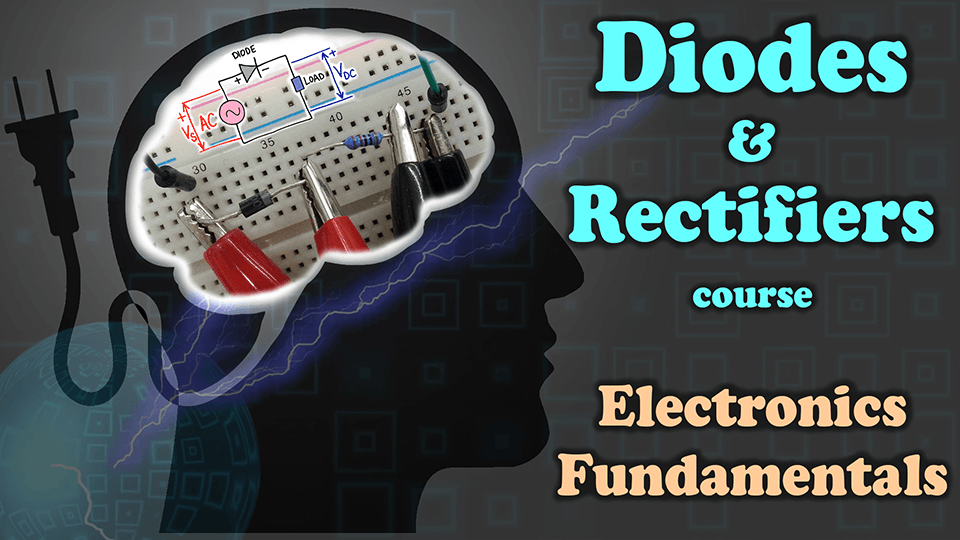Electrical Quantities
$9.02
Electrical Quantities Video Lesson
Description
Electrical Quantities Video Lesson
Video Lesson from Electricity Fundamentals Review Section of Diodes & Rectifiers Course
The review of fundamental electrical engineering quantities and concepts:
- Electric Charge
- Electrical Current
- Electrical Voltage
- Electric Power
- Electric Energy

Electronic Product Information
| Lesson Title: | Electrical Quantities |
| Part of a Section: | Electricity Fundamentals Review |
| Part of a Course: | Diodes & Rectifiers Course |
| Published: | September 2020 |
| Author: | Sasha Jakovljevic |
| Instructor: | Sasha Jakovljevic |
| Duration: | 13:33 min |
| Quality: | 1080P HD |
| Contents: | .mp4 Video file .srt Captions/Subtitle file .pdf Resource Slides |
Detailed Product Information
Electrical Quantities (13:33)
Embark on your Diodes & Rectifiers learning adventure by reviewing the most important electrical quantities first. In this video lesson, we review four electrical quantities that you absolutely need to understand in order to successfully follow the remainder of this course. Those are:
- Electrical Current
- Electrical Voltage
- Electric Power and
- Electric Energy
We cover electric current first and we answer:
- What is electrical current and how do we define electric current?
- What particle is responsible for electric current?
- What is electric charge, how do we designate it and what unit do we use for electric charge?
- Which particles are “charged” and what is the sign of their charge?
- Does any charge that moves really make an electric current? Which particles are “free” to move?
- What types of materials are there and do they all conduct electricity?
- Which materials are particularly suitable for electronics?
- How do we achieve directed movement of charge in conductors?
- How do we indicate direction of electric current?
- What is “reference” direction and how does it relate to actual flow of current?
- How do we designate quantities that are constant in time vs those that change in time?
- What formula connects electric charge and electric current?
- How do we calculate electric current if flow of charge changes in time?
- What is the unit of electric current and how do we designate electric current in electrical circuits?
- Why do we “dope” semi-conductors with impurities?
- What are the most frequently used materials in electronics?
Next, we cover electric voltage as the second key electrical quantity. We answer:
- What is electrical voltage and what is its definition?
- What is the difference between electric “potential” and electric “voltage”?
- Why do we always need to have two points when we talk about electric voltage?
- What is the purpose of “ground” with respect to electric voltage and what is electric potential of ground?
- What does it mean: points are connected together?
- What language do we use to express electric voltage of an element?
- How do we designate electric voltage as a quantity and on electrical schematics?
- What is reference polarity or assumed polarity versus actual polarity of a voltage?
- What is the unit for electric voltage?
- Which law is used to relate voltage and current of an element?
- What is electrical resistance, how do we designate it and what unit do we use for the resistance?
- When is voltage positive and when does it have negative value?
- Do we have the same rules for positive vs negative value of a current that flows through an element?
- Are actual directions and/or polarities really important?
Next quantity we analyze is electric power and we consider the following aspects of it:
- How do we call electric power that changes in time?
- How do we calculate electric power and what quantities do we use in formula for electric power?
- What is the expression for power in Direct Current (DC) circuits?
- What letter is used for power in DC circuits and what is the unit of electric power?
- What are the alternative ways of calculating electric power in resistive electrical circuits?
- What is the alternative way of defining electric power with respect to electric energy?
The last quantity we cover is electric energy. We answer the following:
- How do we obtain electric energy for an element if we know how its power changes in time?
- What is the simplified way of calculating energy in DC circuits?
- What unit do we use for electric energy and why do we use “different” unit than what we use in physics?
- How do we convert energy units expressed with different time bases?
- What prefix is most frequently used in expressing electric energy of an element?
Only logged in customers who have purchased this product may leave a review.






Reviews
There are no reviews yet.